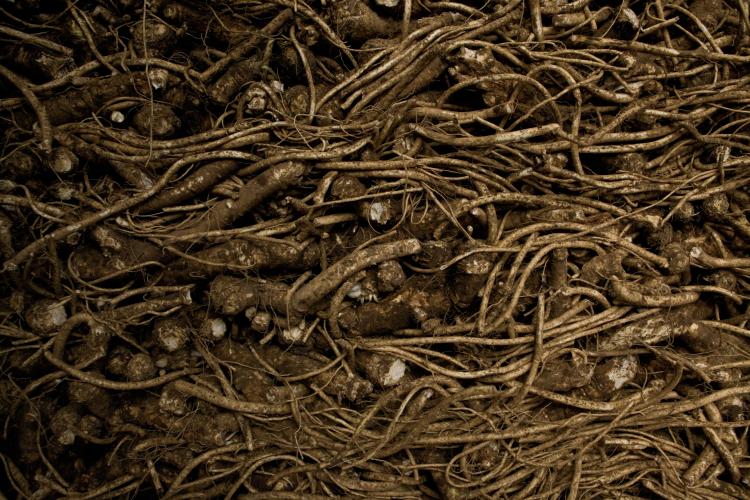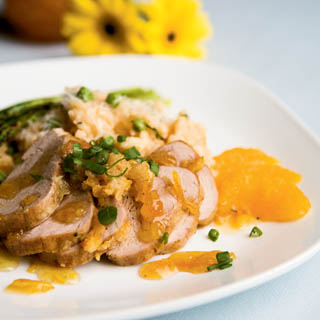Home > Lifestyle > Food For Thought > Horseradish History and Other Pungent Particulars
Horseradish History and Other Pungent Particulars

Roots. Armoracia rusticana, or horseradish, is a member of a venerable botanical family, Brassicaceae, which includes broccoli, cabbage, mustard and wasabi. In fact, when in Tokyo, request “seiyo wasabi” to add a Southern Illinois twist to your meal.
Deeper roots. According to legend, the Delphic Oracle told Apollo – the mythological Greek god of healing and medicine – that horseradish was worth its weight in gold. Early “green” philosopher Pliny the Elder recommended horseradish for its medicinal qualities – both its root and leaves were used as remedies during the Middle Ages, even as horseradish was taking root as a condiment on meats in Germany, Scandinavia and Britain. Horseradish made the transatlantic voyage to North America during colonial times.
A root by any other name … The name horseradish itself remains a subject of heated (and spicy) conjecture. The old German word “mähre” means female horse, and the label may have resulted from confusion between meerrettich (or “sea radish”) and mährrettich (“mare radish”). The name might also stem from an old-school European method of processing horseradish that was called “hoofing” because horses were used to stamp roots tender before the roots were grated.
A root a day? Horseradish contains potassium, calcium, magnesium, phosphorus and mustard oil, which has antibacterial properties. Raw horseradish offers an average 79.31 milligrams of vitamin C per 100 grams. Roots have been used to treat urinary tract infections, bronchitis, sinus congestion, ingrown toenails and coughs. Compounds found in horseradish have been found to kill some bacterial strains.
Move over, sugar. A teaspoonful of grated horseradish mixed with honey reportedly will clear one’s stopped nose within a few minutes. (Take that, Mary Poppins!) And the enzyme horseradish peroxidase is used extensively in molecular biology and is becoming increasingly important in biochemical research fields.
The red and the white. Despite what you may find on the supermarket shelf, there is no “red” horseradish per se, East Coast horseradish purveyor Phil Tulkoff emphasizes. Ground white horseradish is preserved (and toned down) with vinegar, while beets are used to produce the red version, a mainstay of many Passover tables. “The only difference, really, is the color,” Tulkoff maintains. “Years ago, some of our competitors would grind beets in with the horseradish. We use beet juice for the coloring. It’s essentially the same product in a slightly different shade.”
The rite root. Traditionally, during Passover, a blessing is recited over a bitter vegetable – usually raw horseradish – before it is eaten, often as an accompaniment with gefilte fish. One modern recipe for Passover “beet horseradish” includes a large scrubbed beet, a quarter pound of fresh horseradish (rule of thumb, about 4 inches), three tablespoons of kosher white balsamic vinegar, and a teaspoon each of sugar and kosher salt.
Not just ‘sauce material.’ Since 1988, Collinsville, Illinois has been home to the International Horseradish Festival, which takes place the first weekend of June.
Related recipes:
Orange and Horseradish Crusted Pork Tenderloin





Horseradish is a truly unique root